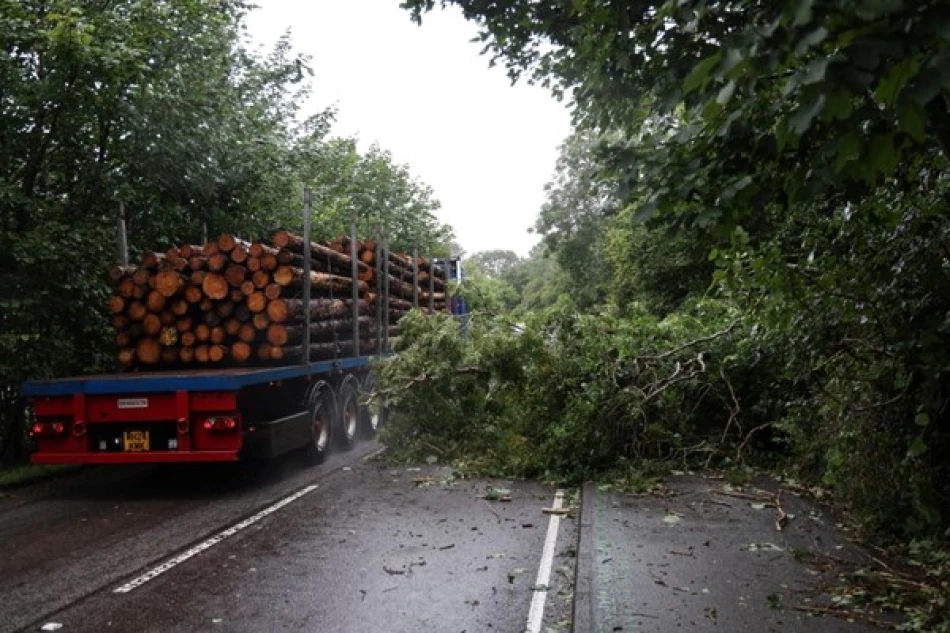
Scotland Rocked by Storm "Floris" - Chaos Unfolds
Storm Floris Delivers Rare August Fury to Scotland, Exposing UK's Weather Volatility
Storm Floris has unleashed unprecedented August winds reaching 85 mph across Scotland and northern England, marking only the second time since 2011 that meteorologists have issued an orange-level warning for severe winds during what should be the country's mildest summer month. The timing couldn't be worse—striking during Edinburgh's peak tourist season when millions of visitors flood the Scottish capital for its world-famous festivals.
Unprecedented August Intensity Raises Climate Questions
The Met Office's orange warning—reserved for weather events that pose a significant threat to life and property—highlights the extraordinary nature of Floris for late summer. August storms of this magnitude are virtually unheard of in the UK, where severe weather typically peaks during winter months between November and February.
The storm brought winds gusting up to 137 kilometers per hour, accompanied by torrential rainfall that transformed Scotland's typically scenic August landscape into a hazardous environment. Coastal areas bore the brunt of the impact, with meteorologists warning of dangerous conditions along Scotland's extensive shoreline.
Infrastructure Buckles Under Unexpected Assault
Transport Networks Paralyzed
Rail operators suspended services across multiple routes as high winds threatened passenger safety and infrastructure integrity. Major roadways faced closures, stranding travelers and disrupting the crucial flow of goods during what should be a peak economic period for Scotland's tourism-dependent regions.
Power Grid Struggles
Scottish and Southern Electricity Networks (SSEN) reported approximately 22,500 homes lost power by Monday afternoon, with restoration efforts hampered by ongoing dangerous conditions. The widespread outages underscore the vulnerability of the UK's aging electrical infrastructure to extreme weather events.
Economic Timing Couldn't Be Worse
Floris has struck during Edinburgh's most lucrative month, when the city hosts the world's largest arts festival alongside the internationally renowned Fringe Festival. These events typically inject hundreds of millions of pounds into Scotland's economy, with visitors filling hotels, restaurants, and entertainment venues.
The storm threatens to disrupt not only immediate tourism revenue but also Scotland's carefully cultivated reputation as a reliable destination for major cultural events. Insurance claims from cancelled performances, damaged venues, and stranded tourists could reach significant figures, particularly given the concentration of high-value events during this period.
A New Pattern of Extreme Weather?
The rarity of severe August storms in the UK makes Floris particularly noteworthy from a meteorological perspective. Climate scientists have increasingly warned that traditional seasonal weather patterns are becoming less predictable, with extreme events occurring outside their historical timeframes.
This shift poses significant challenges for infrastructure planning, tourism marketing, and emergency preparedness. If August storms become more frequent, Scotland may need to reconsider the timing of major outdoor events and invest more heavily in weather-resistant infrastructure.
The storm serves as a stark reminder that even developed nations with sophisticated weather forecasting systems remain vulnerable to nature's unpredictability—especially when it arrives outside expected seasonal patterns.
 Layla Al Mansoori
Layla Al Mansoori







